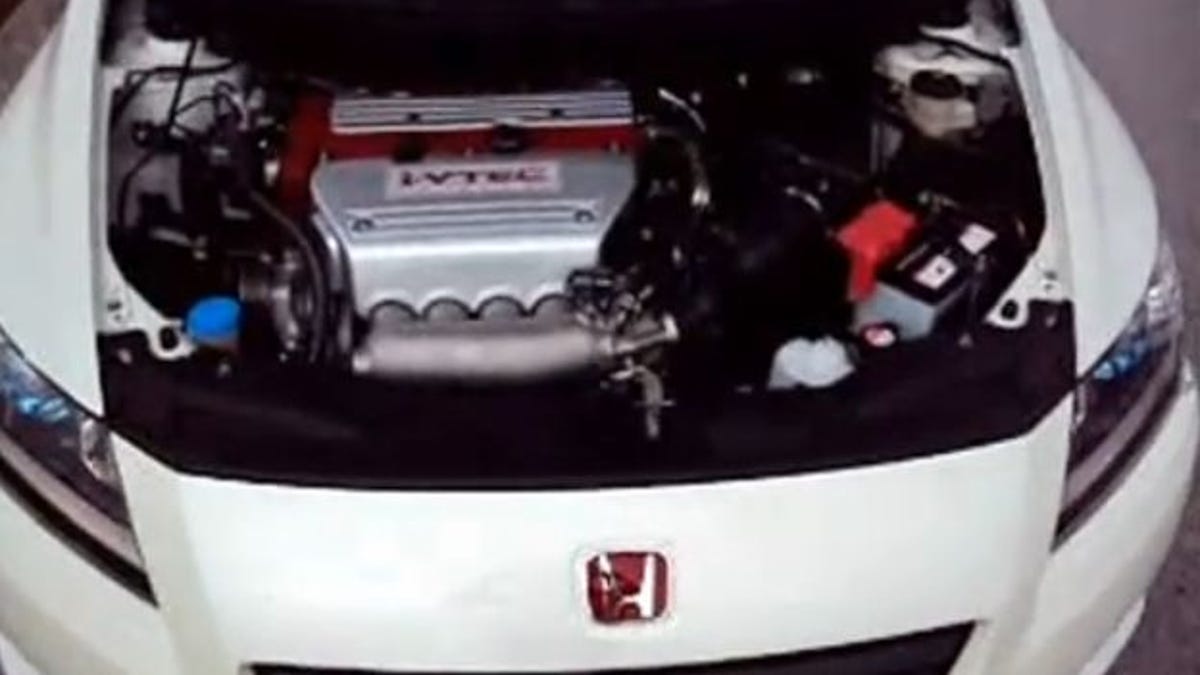Honda CR-Z gets a high-power heart transplant
LHT Performance squeezes more power out of Honda's hybrid hatch with an engine swap worth 160-200 horsepower.

Honda's 2011 CR-Z hybrid is about as sporty as it gets when it comes to hybrid vehicles. Granted, that isn't saying much. I mean the hatchback's 1.5-liter, IMA-boosted power plant only outputs 122-horsepower and manages a combined 34 EPA-estimated mpg. Ford's Fiesta manages similar numbers without the burden of hybrid trickery and complexity. So what's a self-respecting Honda tuner to do to improve the output of the CR-Z's engine room? How about a 200-horsepower engine swap?
Enter LHT Performance and Honda's 2-liter K20 engine, a mill a bit more befitting a sport compact wearing the "H" badge. LHT gave the 1.5-liter IMA mill the old heave-ho and replaced it with the K20, renaming the vehicle "KR-Z" in the process. Honda's K20-series engines are usually found under the hood of many of the automaker's Civic performance variants of the past decade and range in output from 160 to 220 horsepower, depending upon application and model year. We're guessing the K20 under the hood of the KR-Z is one of the most common 200-horsepower variants found powering the current Civic Si or the now-discontinued Acura RSX Type-S. If we're right, then this little wedge is now powered almost 80 more ponies than a showroom example. Torque, on the other hand, is probably only up by 20 pound-feet--the high-revving K20 isn't known for its impressive torque numbers.
Of course, in gaining those ponies, the KR-Z had to lose its IMA electric-assist, the battery pack that powers it, and, presumably, a few miles per gallon. On the bright side, without the battery pack, the KR-Z should also be much lighter than a standard CR-Z. LHT claims that it was able to keep the rest of the KR-Z's driver aid and convenience features intact, including air conditioning, power steering, stability control, antilock brakes, and cruise control. The custom ride also features i-VTEC graphics (a la Civic Si), red Honda "H" badges (a la Civic Type-R), and custom stitched seats with embroidered "KR-Z" logos.
Some time ago, this same team breathed new life into a first-generation Honda Insight by swapping its IMA engine with a K-series engine, so it's no surprise that LHT has the know-how to pull such a stunt off with the CR-Z. What's most surprising is that they've done it so soon after the 2011 model's launch.

